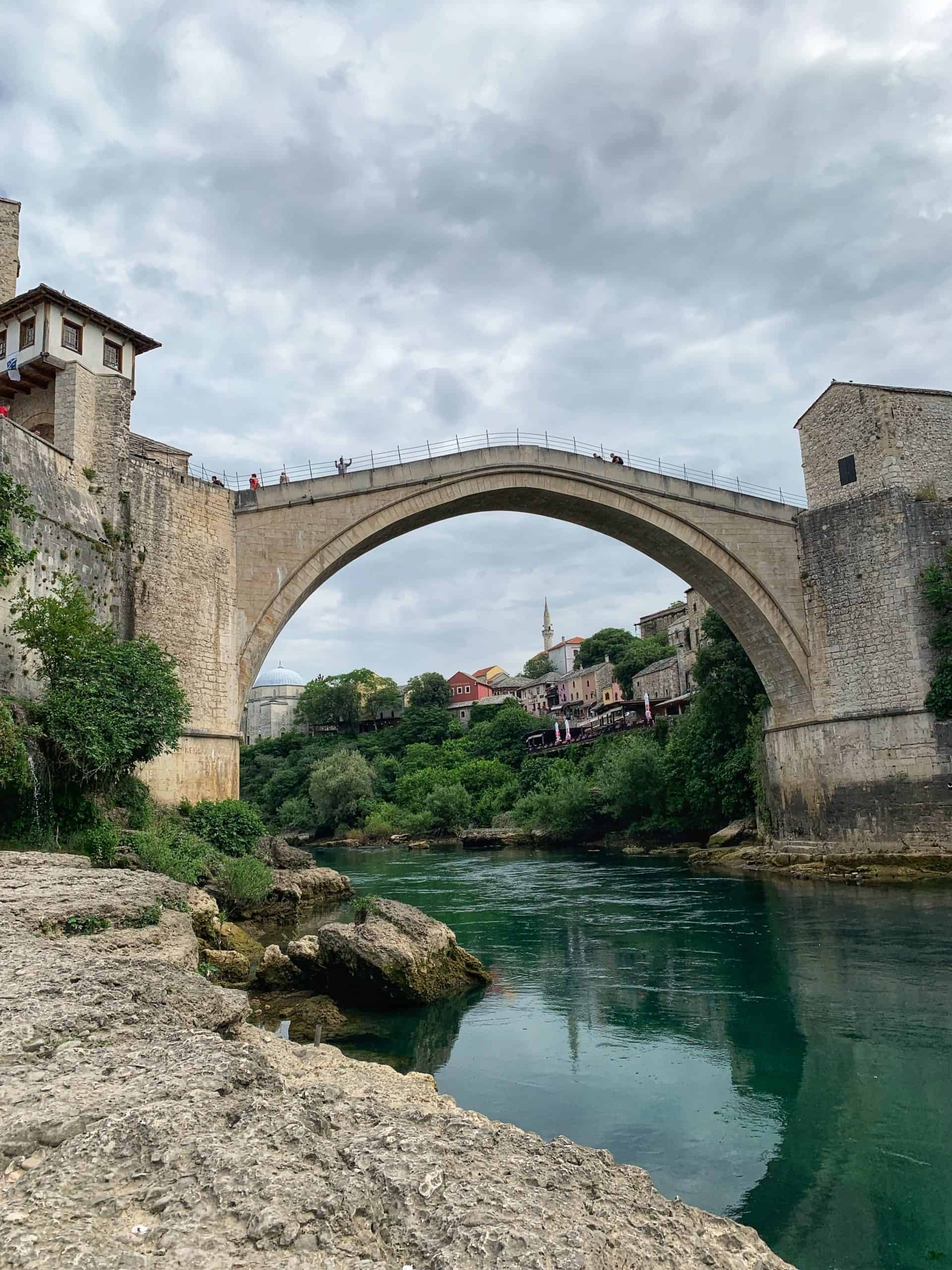
Mostar is the unofficial capital of Herzegovina and is the second most important city in Bosnia and Herzegovina.
It was founded by the Ottomans in the fifteenth century and became part of the Austro-Hungarian Empire in 1878, in 1918 it became part of the DSHS (the State of Slovenes, Croats and Serbs) which then became the Kingdom of Yugoslavia. Following the end of the Second World War it was annexed to the People’s Republic of Bosnia and Herzegovina.
The years of the Bosnian War, between 1992 and 1995, destroyed the city and the bridge itself. Mostar remained divided between Bosnians and Croats until 1996, when free movement between one area of the town and another was again allowed.
The symbol of Mostar is the Old Bridge that somehow divides the city in two, on one side the Muslim one and on the other the Christian one. It was built in 1557 on the orders of Sultan Suleiman the Magnificent and was completed about nine years later. 30 meters long, it is located on the Narenta River with its characteristic donkey-back shape: at both ends are Helebija and Tara, the two towers. Built in tenelija, a local stone, it rests on two limestone piedritti and the shape of its arch is due to a series of irregularities caused by the deformation of the inner line of the arch.
On November 9, 1993 at 10:15 a.m., after two days of artillery shelling by Bosnian Croat forces, the bridge built over 500 years ago collapsed into the river. The destruction of the bridge had little use from a strategic and military point of view being only a pedestrian bridge but the psychological effect on the local population was enormous.
Thanks to donations from foreign countries and under UNESCO protection, it was rebuilt and then reopened only in 2004.
The Ottoman origins of Mostar are still evident today. On the street Bišćevića sokak is the famous Turkish house, the most charming of the oriental style mansions. It is located on the east bank of the Narenta and this house is characterized by a double living room (one for women and one for men) and an extremely decorated furniture with its oriental carpets, antique inlaid furniture and the view of the river.
Among the most beautiful mosques in the whole of Herzegovina, there is the one dedicated to Pasha Koski Mehmed. Finished in 1618, it is located on the bank of the Narenta, almost in front of the Old Bridge. This mosque also suffered several damages in the years of the Bosnian War but was rebuilt.





















